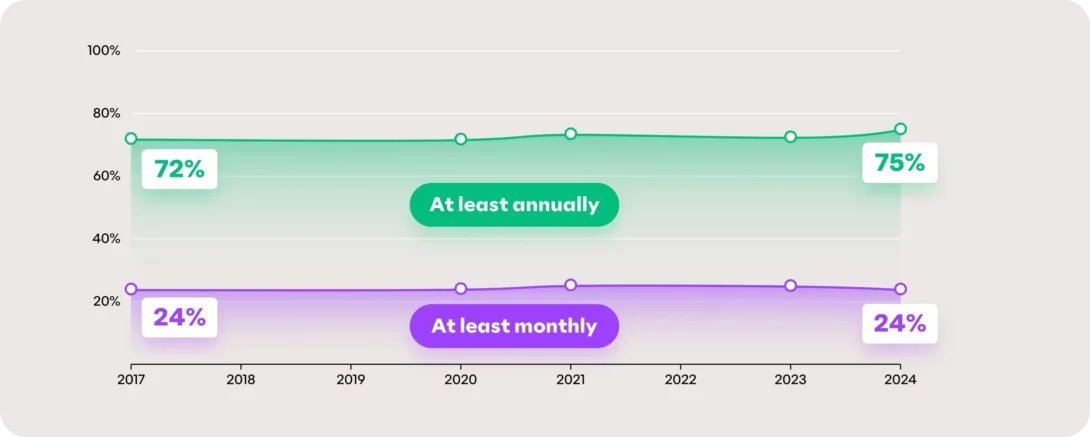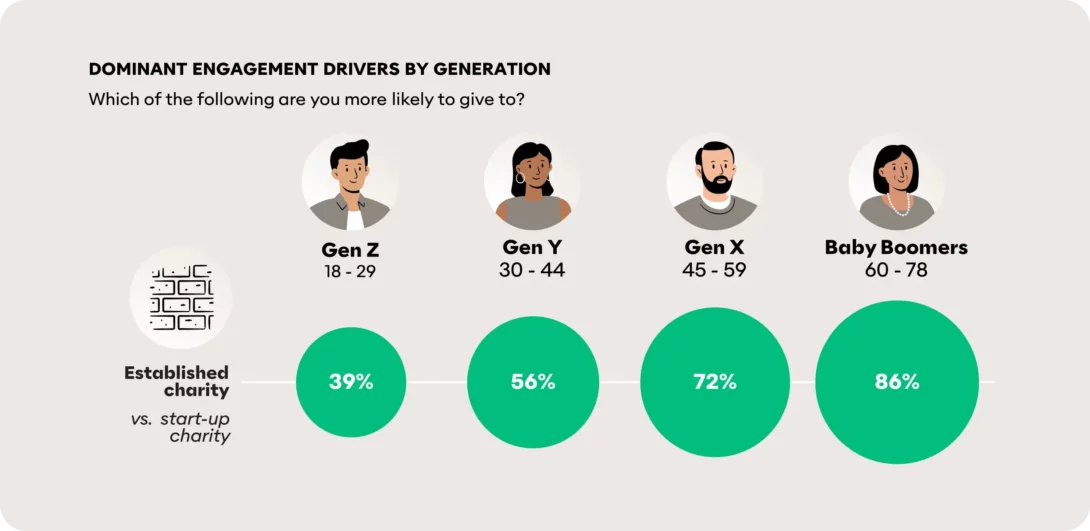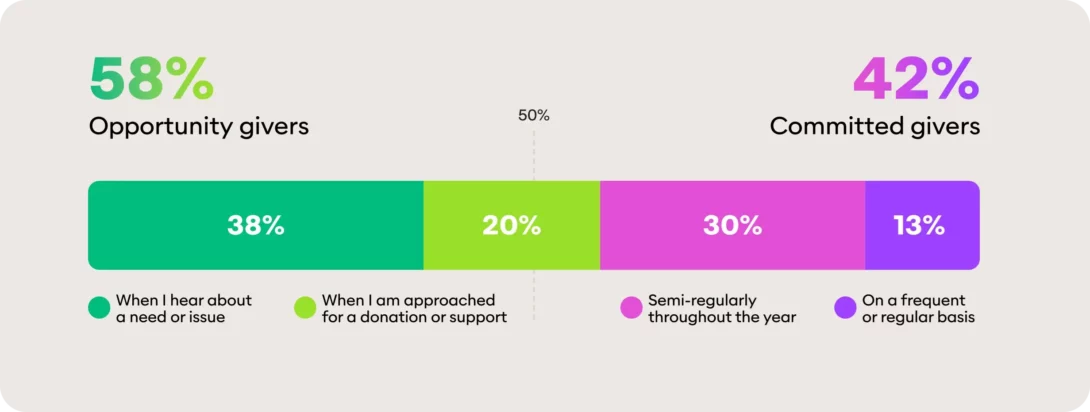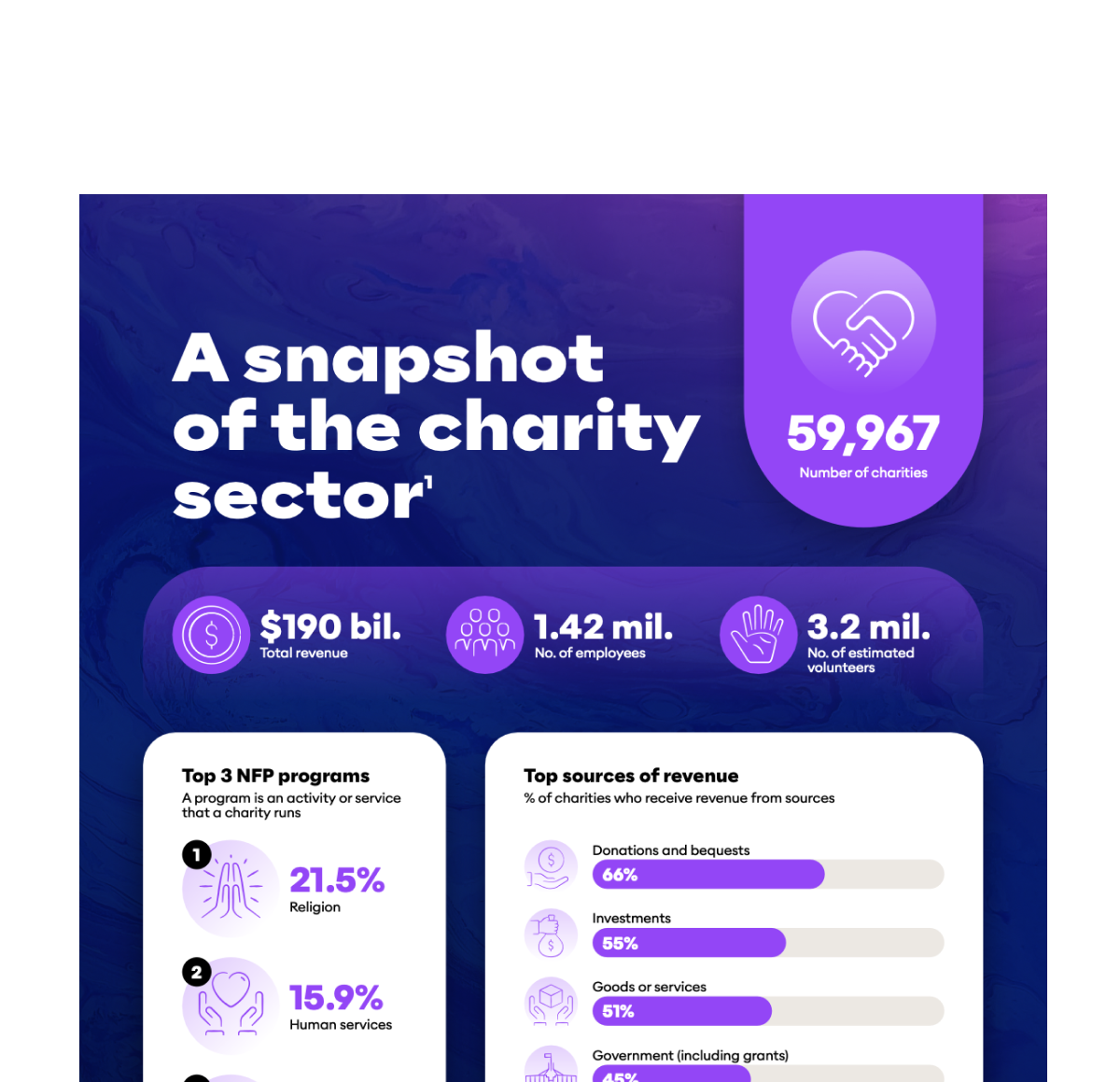ARTICLE
The not-for-profit landscape

Australia’s not-for-profit sector is at the heart of our national identity and is made up of a wide variety of charities. In this article, we provide an overview of the NFP landscape as well as key trends in donor behaviour.
There are over 59,000 registered charities that employ 1.42 million people with an estimated 3.2 million volunteers. The Australian charities sector is extremely diverse and comprises a range of sectors. The biggest proportion are religious charities (21.5%). The next largest charity sector is that of Human Services at 15.9% followed closely by Education (15.6%).
Giving practices in Australia
Four in five Australians, 84% have given financially to charities or not-for-profits. Up from 80% in 2023. this is consistent with pre pandemic levels. Three in four (75%) give at least annually which aligns with 2017, when 72% gave at least annually. Despite significant global events and economic flux, the proportion of people giving has remained relatively consistent over the past seven years. As of 2024 75% give annually, and 24% give monthly.
Despite economic uncertainty, giving remains stable

Interestingly older donors prefer giving to established charities, but Gen Z favours disruptors. When it comes to giving financially, we asked Australians which of the following are you more likely to do? Give to a start-up charity/ not-for-profit, 36% agree and give to an established charity/ not-for-profit – 64%. However, when looking at Gen Z 61% prefer giving to a start-up charity/not-for-profit.

Almost nine in ten Baby Boomer donors are more likely to give financially to an established charity at 86%. This decreases across the generations. Gen Y are the most neutral on giving to a start-up (44%) or an established charity (56%). Gen Z, however, are more likely to favour a start up organisation.
View this post on Instagram
Opportunity givers vs committed givers
Stable donation bases are shifting. A growing trend shows donors moving from committed giving patterns towards more spontaneous, need-driven giving. Almost three in five donors are opportunity givers (58%), giving when they hear about a need or an issue or are approached for donation or support. The remaining two in five (42%) are committed givers who give semi-regularly throughout the year or frequently.
As has been the case for a while, the younger generations are more likely than their older counterparts to be opportunity givers.

Interestingly, since 2019, the proportion of Gen Z who are opportunity givers has been declining. This could be that they’re moving into their earning years and can give more regularly and on a committed basis. Overall, however, Gen Z are still more likely to give when the opportunity presents itself, rather than on a committed routine.
Get all the insights on the NFP sector in the infographic:
- How to maximise impact
- Key motivators for giving
- The new wave of volunteering
- And much more





